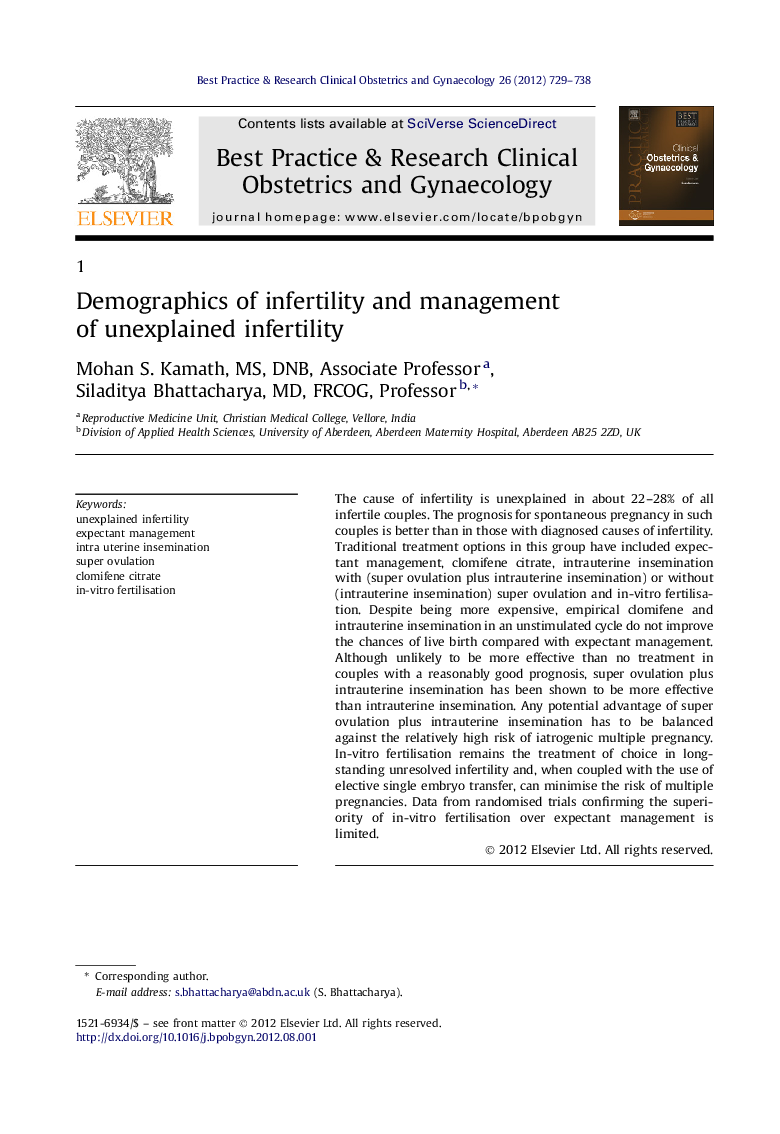| Article ID | Journal | Published Year | Pages | File Type |
|---|---|---|---|---|
| 3907674 | Best Practice & Research Clinical Obstetrics & Gynaecology | 2012 | 10 Pages |
The cause of infertility is unexplained in about 22–28% of all infertile couples. The prognosis for spontaneous pregnancy in such couples is better than in those with diagnosed causes of infertility. Traditional treatment options in this group have included expectant management, clomifene citrate, intrauterine insemination with (super ovulation plus intrauterine insemination) or without (intrauterine insemination) super ovulation and in-vitro fertilisation. Despite being more expensive, empirical clomifene and intrauterine insemination in an unstimulated cycle do not improve the chances of live birth compared with expectant management. Although unlikely to be more effective than no treatment in couples with a reasonably good prognosis, super ovulation plus intrauterine insemination has been shown to be more effective than intrauterine insemination. Any potential advantage of super ovulation plus intrauterine insemination has to be balanced against the relatively high risk of iatrogenic multiple pregnancy. In-vitro fertilisation remains the treatment of choice in longstanding unresolved infertility and, when coupled with the use of elective single embryo transfer, can minimise the risk of multiple pregnancies. Data from randomised trials confirming the superiority of in-vitro fertilisation over expectant management is limited.
